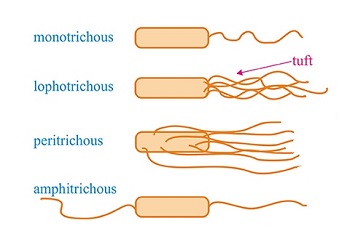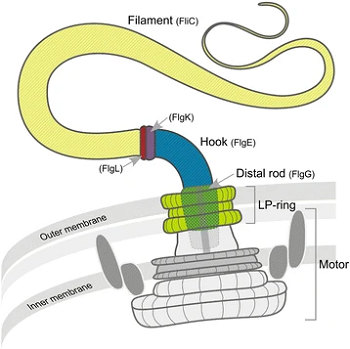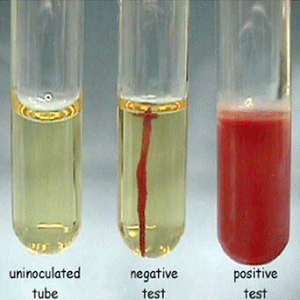Motility Culture Method - Introduction, Flagella, Fibril, Principle, Procedure, Result, Interpretation
Introduction to Motility Culture Method
The motility culture method tests the motility of microorganisms such as typhoid bacillus because the hanging drop method and wet mount methods are dangerous due to their pathogenic nature. Like mother motility test methods, it is used in the identification process since most gram-negative bacteria are motile.
Motility by Flagella, Fibril
Motility is the ability of any microorganism to move from one place to another by especially the means of propeller-like flagella or by special fibrils (twitching motility) or gliding form of motility. These flagella are thread-like locomotor appendages that extend from the plasma membrane and cell wall. Depending upon the genera and species of the organisms, an organism can possess single flagella named monotrichous or multiple flagella i.e. lophotrichous, peritrichous, amphitrichous.

Fig: Bacterial flagella configuration (Source: Wikipedia)
The presence of flagella is a chief characteristic of any organism as it is an important taxonomic tool. Although flagella are mostly present in bacilli, some species of cocci are also flagellated.

Fig: Bacterial flagella in gram-negative (Source: Wikipedia)
Principle of Motility Culture Method
In the motility culture method, the test organisms are grown in a semi-solid medium such as SIM medium (Sulphide Indole Motility medium) by stabbing the media and observing the growth as well as turbidity, which is easily visible by the naked eye.
Procedure of Motility Culture Method
The procedure of motility culture method is as follows:
Take a semi-solid medium i.e. SIM medium (Sulphide Indole Motility medium)
Take an inoculating wire and sterilize it by flaming and let it cool
Remove the cotton plug from the mouth of the test tube and flame the mouth to avoid contamination
Pick up the test organism from its isolated culture
Stab the medium only once with the test organism with the help of the inoculating wire
Flame the neck of the test tube with inoculated medium and plug the mouth with cotton
Incubate the tube at 35-37°C for 24-48 hours
Observe for the presence or absence of turbidity/cloudiness in the incubated tube

Fig: The culture test for motility (Source: ReserchGate)
Result, Interpretation of Motility Culture Method
The presence of turbidity/cloudiness around the stab indicates the presence of motility in the test organism. This phenomenon is due to the migration of the bacteria from the line of inoculation.
In case of the absence of turbidity/cloudiness around the stab, we can confirm that the test organism is immotile and positive for the motility culture method test as the bacteria did not migrate from the line of inoculation.